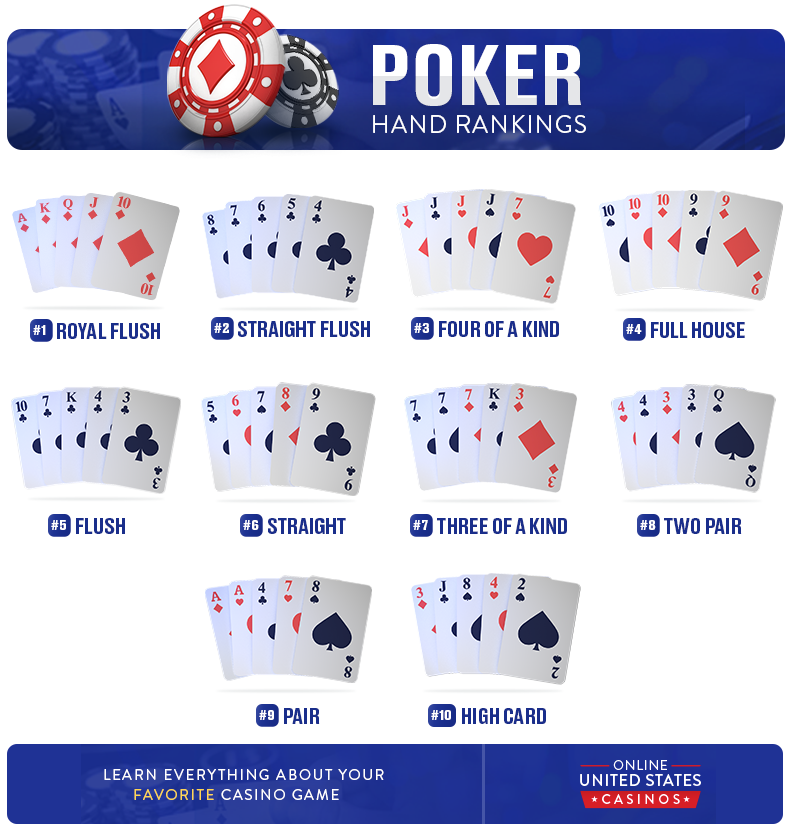How to Play Online Poker
Do you want to learn how to play online poker? Follow the interactive step-by-step demo below to learn the basics. We’ll walk you through a real hand step by step, betting options, table positions, and share key tips to help you play smarter.
Tap the Fullscreen icon for a better view of the demo.
How to Play Online Poker Step by Step
When we say “online poker,” we’re talking about Texas Hold’em—the most popular version of the game, both online and in live tournaments.
Texas Hold’em is a 5-card game where players use shared community cards to build the best hand. This is how a typical hand plays out at most online poker sites.
Ante Bet and Hole Cards
Most online poker games start with two players placing “ante”, or forced wagers, called the blinds. This is followed by the deal of each player’s down or “hole” cards.The Dealer Places the Community Cards and Deals Two Cards
The dealer offers each player two down cards and five “community cards,” which are face up. The community cards are essential to making up your hand and judging what other players may have.Betting Rounds
A betting round follows the hole deal and subsequent deals, the Flop, the Turn, and the River.
The Flop delivers THREE community cards, allowing players an early glimpse of whether they have good odds of winning or not.
The TURN delivers ONE community card.
The RIVER delivers the ONE community card, the last card played before players must show their hands.
Every player can check, bet, call, raise, or fold at each stage.Best Poker Hand Wins
After the final deals and bets, the remaining players make their best five-card hand using their hole cards and the community cards to form their best poker hand. You can use any five cards and are not required to use your hole cards.
For example, if you have pocket fours and the board is 7c-8d-9s-10c-Jh, you would play the jack-high straight on the board. The highest-ranking hand wins the pool of bets.
In the rare case that two or more players have the exact same hand, the pot is split.
Basic Rules for Online Poker
Poker is different from other card games because it is based on betting according to the strength of a hand or its perceived strength. That is why it is essential to know the rankings of hands and the potential of improving them to increase your chances of winning.
Each poker variation has its own rules and gameplay features, but the basics of the game are similar.
Card Values
Poker is usually played with a standard 52-card deck. The values of the cards are much the same as in other card games:
- Cards from 2 to 10 represent the value of the number.
- Face cards are ranked higher than numbered cards, from Jack to Queen to King.
- An Ace can be the lowest card in an Ace-to-5 straight or the highest for other hands.
Poker Hand Rankings
Learning the hands and rankings is one of the most important things about poker. This will improve your odds when you play the game. Below are all the poker hand rankings.

Hand Odds
So, now you’ve got to grips with all the poker hands and their rankings – let’s take a deeper look at the probabilities of landing those all-important card combinations:
- Royal Flush: The probability of getting a Royal Flush is 0.000154%. The odds are 649.739: 1.
- Straight Flush: The probability of getting a Straight Flush is 0.00139%. The odds are 72.192: 1.
- Four of a Kind: The probability of getting a Four of a Kind is 0.0240%. The odds are 4.164: 1.
- Whole House: The probability of getting a Full House is 0.1441%. The odds are 693: 1.
- Flush: The probability of getting a Flush is 0.1965%. The odds are 508: 1.
- Straight: The probability of getting a Straight is 0.3925%. The odds are 254 : 1.
- Three of a Kind: The probability of getting Three of a Kind is 2.1128%. The odds are 46.3 : 1.
- Two Pairs: The probability of getting Two Pairs is 4,7539%. The odds are 20.0 : 1.
- Pair: The probability of getting a Pairs is 42,2569%. The odds are 1.37 : 1.
- High Card: The probability of getting a High Card is 50,1177%. The odds are 0.995 : 1.
Rules for Betting in Online Poker
Most games have predetermined limits on how much a player can bet per round, except for no-limit games in which a player may wager all of their chips in any round. The betting order may start with the high card showing in stud games or the player to the dealer’s left in other games. The round then moves in clockwise order around the table.
Knowing When to Bet
A player needs to make the right choice when it is their turn to bet. You may have a strong hand and choose to call to get more chips in the pot for a big play later, or you may raise in an attempt to run other players off and take the pot. You can bluff or be realistic and fold.
With all of the options, it is crucial to know hand rankings to tell if a hand is strong or has a chance of improving.
Poker Betting Chart
The following chart provides the best betting options for each position at a poker table. Follow these guidelines to make the most out of your gameplay.
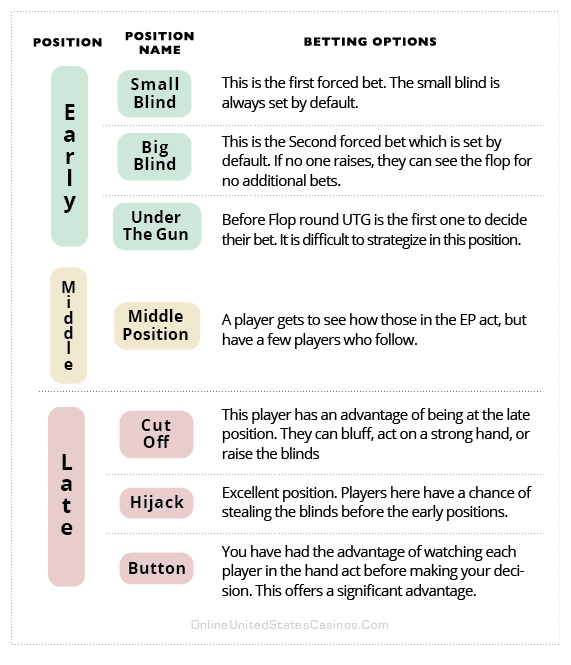
Poker Betting Limits
Each game has predetermined betting limits for the ante and rounds. Below we’ve listed the most common ones:
Fixed Limit
The limit is predetermined based on the round.
In most limit games, the bet on the turn and river is double the betting limits at the deal, before the flop, or before Fifth Street in Stud games.
Pot Limit
It allows a player to bet or raise as much as is in the pot during the round.
No Limit
It allows a player to put in all of their chips at any point of the hand.
Limits on Raises
It limits the number of raises allowed in any betting round (usually three raises).
Poker Table Positions & Layout
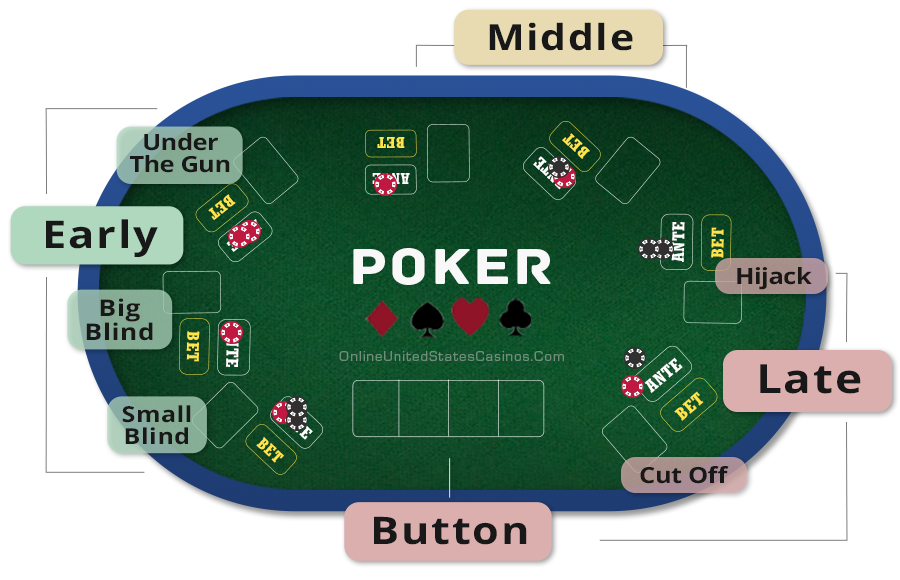
Poker Table Positions
Knowing your position at the poker table is essential, especially when there are many players. For example, someone in a late position has the advantage of seeing more bets, making it easier to decide how to wager. Below, we’ve listed the main table positions and what to expect from each one.
The Button
This is the position of the dealer. It is considered the best because the player is not committed to an ante bet but knows how the rest of the table bets.
Late Position
These are the one or two seats just before or to the right of the button. These players generally also have a great chance to weigh the strength of the other previous hands.
Middle Position
These are the positions between the late and early spots. Substantial wagers from these positions usually mean a player has no fear of being raised.
Early Position
These are the three players sitting to the left of the button, known as the small blind, the big blind, and “Under the Gun.” They are the last to bet on the initial deal and wager first in subsequent rounds.
Poker Game Types
When you enter an online poker room for the first time, you’ll notice several options. Let’s look at the different types of games you’ll find and how each works.
Cash Games
There is no start or stop to the round in cash poker games. You convert the money in your account into a chip stack and sit at a table with other players. You’ll hop into the action when the current hand ends.
Cash games come in Fixed Limit, Pot-Limit, and No-Limit varieties. Everyone in these games will have different-sized stacks. You can come and go as you please, playing only a few hands.
Sit & Gos
A sit-and-go is a poker tournament that begins when a set number of players pay the entry fee and take their seats. These are often single-table games, and the cost to join and prize payouts vary from match to match.
This poker style is perfect for managing your money since the entry fee is fixed. Unlike cash games, everyone starts with the same chip stack, leveling the playing field.
Multi-Table Tournaments
Multi-table tournaments (MTTs) are similar to Sit & Gos but on a larger scale. These matches have a set starting time and larger guaranteed payouts, but take longer to complete.
So, if you want hours of entertainment for one low entry fee, MTTs are a great way to play poker. Can you beat hundreds of people and take one of the top spots?
Online Poker Strategy
Online poker strategy isn’t the same as live poker. Since you can’t see players’ faces or read physical tells, you must rely more on betting patterns and timing.
Be selective with your hands, especially at a new table. Playing slower helps you observe how others play and adjust your strategy as you go.
Poker Strategy Chart
Below is a basic online poker strategy chart that offers suggestions on how to deal with unsuited pocket cards. We recommend that you keep this chart in mind, especially if you are a beginner.
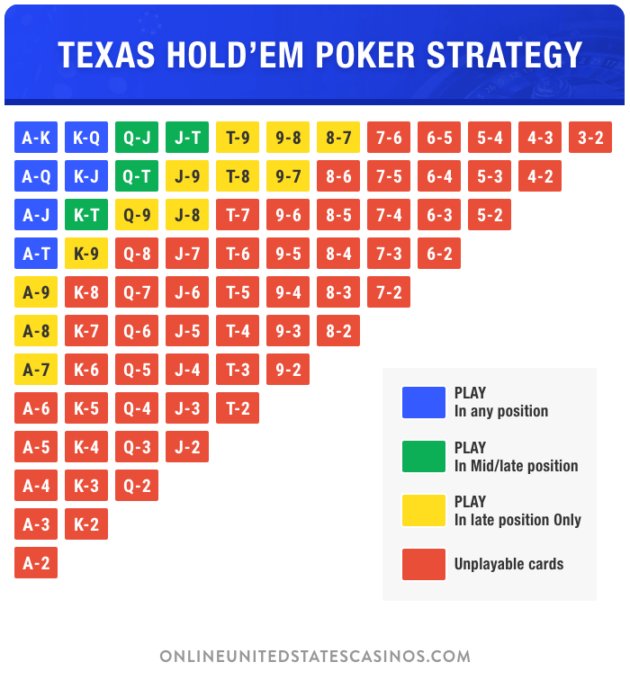
Download the Texas Holdem Strategy Cheat Sheet
Core Concepts
Learning poker strategies will help you become a winning player. Below, we’ve listed an overview of the best tips to give you a solid place to start. You should also become familiar with players’ different Hold’em Terms.
Starting Hands
Better starting hands give you a better chance to win. Most players lose money by playing too many weak hands.
Position
You win more from a late position because you can see what others do before acting. Use this to your advantage.
Pay Attention
Even when you fold, watch how others play. You can learn who bluffs, who plays tight, and what habits you can exploit.
Bankroll Requirements
If you’re playing for fun, just don’t risk more than you can lose. If you’re playing seriously, keep 200–300 big blinds for your current level.
Tight and Aggressive Play
Don’t play too many hands, but when you do, play them strong. Betting aggressively forces opponents to make tough decisions.
Bluffing
TV makes it look like pros bluff all the time—but they don’t. They Bluff rarely and only when the situation makes sense.
Best Poker Strategies to Win
We’ve assembled useful online poker tips that lead to a winning strategy. With experience, your system may evolve until you have fine-tuned it and know what to do in any situation.
Learn The Rules & Hand Rankings

Understanding the rules of the poker variant you are playing is essential to increase your chances of winning. You can swap cards out in 5-card draw, there are community cards in Texas Hold’em, and Omaha gives you four hole cards. Despite these differences, they all use the same hand strengths.
Start With Low-Limit Games

When you begin playing poker, starting with small stakes is helpful. You don’t want to lose much money during the learning and mastery phase. The higher the stakes, the more skilled the players are, and the more bankroll you need to keep playing.
Play Within Your Bankroll

Only risk 1–2% of your total bankroll per game. If you’re serious, keep at least 200–300 big blinds or 30 to 50 tournament buy-ins in your bankroll to survive losing streaks.
Play Only Strong Hands
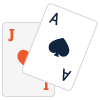
Don’t jump into every hand. Wait for good starting cards or strong combinations, such as pairs or suited connectors.
Know When to Raise

Is a high pair going to win it? Will a bluff here knock out a timid player? Use the knowledge you gather at the table to deduce when to raise. Get a good grasp of where you stand before pushing more money into the pot.
Here are a few situations where you should consider raising:
- Protect your hand
- Bluff your hand strength
- Knock people off the pot
- Bring more money into the pot
Know When to Fold
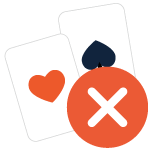
When you start with a good hand, it is the hardest thing to do, but odds can fade. You should learn to let it go if a tight player suddenly goes all in. Don’t chase four to a flush or open-ended straight, even if you think they are bluffing.
Here are some situations where you should consider folding:
- You know you have the worst hand
- Pot odds aren’t in your favor
- You’re chasing a single card
- You don’t want to call a massive bet
Be Aggressive, but Smart

When you have a good hand, bet confidently. Aggression makes opponents second-guess their hands and fold more often.
Bluff When It Matters

When you have a strong hand but are unsure if it is a winner, it may be a good time to bluff. Remember, it is always good to prove you can win at a table before you try to trick anyone.
Bluffing can cause timid players to fold and give you more info about other opponents’ hands. However, be prepared to bow out if someone calls or raises the pot.
Learning Tells
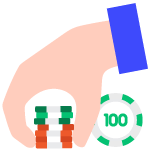
Watch betting patterns and timing. Even online, players have tells, like betting fast when they are strong or pausing when they are unsure.
Find The Best Games

The best games have rules you understand entirely with players at your skill level or lower. Play at a casino with valuable comps or at online sites with quality software features, great graphics, and trusted banking methods.
Follow the Blinds and Understand Position

Know when blinds are coming around, and remember that a late position gives you a betting advantage. Use position to your benefit.
Find Games You Can Beat

Choose tables with players around your skill level or lower. Playing on trusted sites with good software helps you stay focused.
Advanced Poker Strategies
When you have some basic tactics down, consider moving on to these more advanced online poker strategies when making decisions.

Think in Ranges
You know what you have, but what could your opponents possibly hold? Instead of guessing one hand, think about all the hands your opponent might have based on their actions.
A pre-flop raise could mean big cards or a strong pair. A call might mean something weaker.
Thinking in ranges helps you make smarter decisions at every stage.
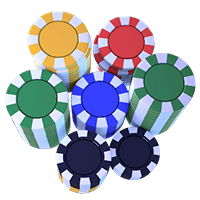
Exploit Pot Commits
When another player puts a significant portion of their chips on a hand, they are probably ready to go the distance.
Try to call in more of their money and take them down if you know you will win.
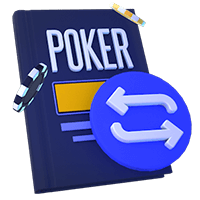
Counterstrategy
Many times, you enter a game without knowing the other players’ styles.
As the session progresses and you gain more information about your opponents, you can develop tactics against them.
Online Poker Odds
When playing poker, knowing your chances of filling out a winning hand is helpful. It’s what we mean by Texas Holdem odds. Odds are more important in this game because of the number of cards dealt and how the deal works.
You can figure out your chances of getting the card(s) you want in different ways. One is simple odds. For instance, the odds of making a pair on the flop from any two-hole cards are 3-1. The odds of getting a pair on the two hole cards are 16-1.
The other vital odds calculation is “outs,” or the number of cards left in the deck that can make a winning hand. For example, if you have 5-6 in the hole and 4-7-10 on the flop, you have four to a straight. You seek a 3 or an 8 to complete the straight, so you have eight outs or the four 3s and four 8s left in the deck.
Bankroll Management for Online Poker
Look through the different scenarios you might find yourself in and how to manage your bankroll.
Poker Bankroll Management for Beginners
New players should have a conservative bankroll management strategy. You’ll face significant variance and thus need more room for error.
Your bankroll should include 50 buy-ins for any limit you play at, and your buy-in level should be 2%. This means you won’t be able to move to the next buy-in level until your bankroll is 50x that buy-in level.
Poker psychology dictates this. You’ll be a better player when you know any losing session is a small part of your gaming budget. If you have an unlucky streak- say 10 to 20 tournaments or sessions without winnings- then move down to the previous buy-in level again. Beginning poker can sometimes be a two-step-forward, one-step-back process.
Poker Bankroll Management for Experienced Players
Experienced poker players can increase the percentage size of their buy-ins — from 2% to 5% or more. These players have less variance and tend to have a dedicated bankroll (not just a stash for a hobby).
Avoid re-buy tournaments. These are tempting because the initial buy-in is small, and they have small starting chip stacks. This means that highly aggressive players also buy into the tournament. Most will bust out, but a few will get lucky and have huge chip stacks by the time you re-buy an entry. You have little chance of winning, so it’s a budgeting sinkhole.
You should also track your results. Players remember a big winning session but tend to forget 10 losing sessions. Use income tracker apps like ITM Poker Bankroll Manager, Poker Manager, or Poker Income Tracker to keep track of every session.
Bankroll Management for Live Poker And Tournaments
Your strategy changes according to the type of game you enter. Online poker sites have turbo events, sit’n go events, add-ons, re-buys, and traditional freezeouts. Online cash games require some strategies, while live options require different skills because you read players differently.
Below is a broad overview of the types of poker games you can enter, with general advice for approaching the main types.
Bankroll Management in Poker Tournaments
Stay the Course
Tournament players should stick to the 2% equation because tournaments naturally have a wider variance. You’ll have longer stretches where you don’t have winnings.In-Game Bankroll Management
Once you pay the buy-in, you’ll receive a stack of chips the same size as other players. Use different strategies once the tournament begins because you’ll want targeted aggression to build your chip stack.
Adjust these strategies to help you manage your chips throughout the game and give you the best shot of winning.
Live Dealer Poker Bankroll Management
Increase the Buy-In
Live poker players can increase their buy-in percentage. You’ll win more consistently, especially if your skill has improved.
You’ll often see many of the same players, allowing you to adjust your strategy and improve your odds of winning.Keep a Poker Journal
Gauging your sill can be difficult at first, which is why keeping a poker journal of your sessions is essential.
With the journal, you can properly assess your skill level and make adjustments to correct any mistakes or leaks in your play.
You’re Ready to Play Poker Online!
Now that you’ve seen how it all works, you can sit at a table more confidently. Just take it slow, play strong hands, and watch how others bet.
And if you ever get stuck again? Return to the demo or strategy chart, go through it again, and reset. It’s way easier to learn when you’ve already seen how a real hand plays out.

